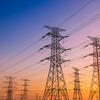Ziwen Ruan, Xi Lu, Shuxiao Wang, Jia Xing, Wei Wang, Dan Chen, Chris P. Nielsen, Yong Luo, Kebin He, and Jiming Hao. 2022. “
Impacts of large-scale deployment of mountainous wind farms on wintertime regional air quality in the Beijing-Tian-Hebei area.” Atmospheric Environment, 278, June, Pp. 119074.
Publisher's VersionAbstractThe development of wind power plays an essential role in achieving China's carbon neutrality goals and air quality standards. A large number of studies have addressed the benefits of substituting fossil fuels with wind power on climate and air quality (defined as indirect impact) by macro-scale methodology. In recent years, more and more researchers have discussed its impacts on the general
atmospheric circulation and air pollution dispersion (defined as direct impact) by parameterizing wind energy extraction in meso-micro scale models. However, the comprehensive investigation (considering both direct and indirect impacts) of the utilization of wind power on atmosphere environmental impacts remains vacant. Our study first evaluated both the direct and indirect impacts of wind power on air quality through an integrated methodological framework by using WRF-CMAQ system. The present analysis took wind farms located in Zhangjiakou to explore their impacts on air quality in winter, particularly over the downwind Beijing municipal area in the North China Plain. Results indicated that the deployment of wind power leads to spatially mixed direct impacts on PM2.5 concentrations in Beijing with a monthly net increase of 0.067 μg/m3 (0.08%) relative to the regional average. Contrarily, the substitution of coal-burning with wind power in rural household heating would result in notable indirect benefits to monthly PM2.5 concentrations in Beijing, specifically, reducing emissions of CO2 and conventional
air pollutants by 64% in rural heating sector. The combined impacts of wind power displayed regional differences: in the wintertime (January), Zhangjiakou PM2.5 concentrations increased (+0.147 μg/m3) whereas, decreases are achieved (−5.642 μg/m3) in Beijing. Therefore, to support the large-scale deployment of wind power, future energy policies should take comprehensive account of the diverse environmental impacts, including both the indirect benefits of fossil energy substitution and the potential direct atmospheric effects on regional air quality.










